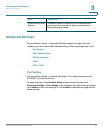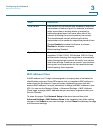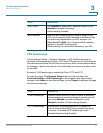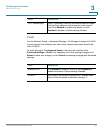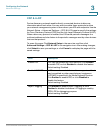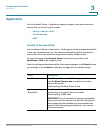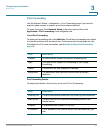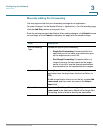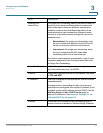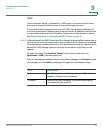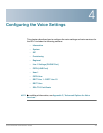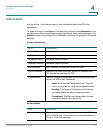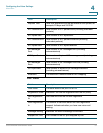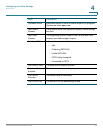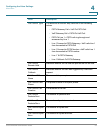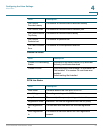
Configuring the Network
Application
Cisco SPA232D Administration Guide 47
3
External Port,
Internal Port
For Single Port Forwarding, specify the ports to use. For
simplicity, the internal and external port numbers will
often be the same. However, different external port
numbers could be used to differentiate traffic of the
same application type intended for different internal
servers, or to promote privacy through the use of non-
standard ports.
• External port: For single port forwarding, enter
the port number that external clients will use to
set up a connection with the internal server.
• Internal port: For single port forwarding, enter
the port number that the ATA uses when
forwarding traffic to the internal server.
The correct entries appear automatically if you choose
a standard application from the Application Name list
for Single Port Forwarding.
Start - End Port For Port Range Forwarding, specify the range of ports to
use. Valid values are from 1 to 65535.
Protocol Select the protocol(s) that can be forwarded: TCP, UDP,
or TCP and UDP.
IP Address Enter the IP address of the local server that will receive
forwarded traffic.
To ensure correct forwarding of traffic, local servers
must either be configured with a static IP address, or be
assigned a reserved IP address through DHCP. Use the
Interface Setup > LAN > DHCP Server page to
reserve IP addresses. See Network Settings for the
LAN and DHCP Server, page 34.
Enabled Check the box to enable this port forwarding rule, or
uncheck the box to disable it. Default setting: Disabled
Field Description



